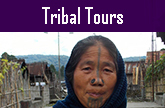Shillong Cherrapunjee Mawlynnong Tour
Tour Duration : 3 Nights / 4 Days
Travel Season : All year round
shillong cherrapunjee mawlynnong tour itinerary:
Day 01: Guwahati - Shillong (100 kms, 2 hrs drive)
Meet and greet upon arrival at Guwahati Airport / Railway Station and drive to the city.
Guwahati:
Guwahati, 'the city of Eastern light' stands on the southern bank of the mighty river Brahmaputra. It is the capital city of Assam and the gateway to the entire north-eastern states. Modern Guwahati is the hub city of Assam. It fulfills every aspect of a metropolitan city with its advanced means of transport, communication and media, as a major center of business activity, educational institutions, and various administrative and political activities of entire Assam. Besides, its landscape surrounded by hills and the mighty Brahmaputra River, rich and diverse flora and fauna enhances its natural scenic beauty.
Visit in Guwahati -
Kamakhya Temple:
Kamakhya Temple, one of the greatest 'Shaktipeeth', the shakti shrine of Goddess Kamakhya is situated on the Nilachal Hills. It is the oldest center of Tantric Shaktism. A famous legend regarding the birth of the Kamakhya temple narrates that Lord Shiva, rage with anger at his wife Sati's death, wandered the entire earth carrying Sati's corpse. An organ of Sati fell here and eventually the place became a temple of worship in due course of time. The temple features various stone inscriptions, terracotta works, sculptures and idols of Ganesha and Chamundeswari which are worth mentioning. The famous 'Ambubachi Fair' is celebrated with great enthusiasm every year in mid-June in this temple and devotees from different parts of India throng into it for the special occasion.
Thereafter, take transfer to Shillong.
Shillong:
Famously known as the 'Scotland of the East', Shillong the capital city of Meghalaya stands at an altitude of 4908 feet above sea level. The British were so moved by the magnificent beauty of this place that they set it as a Capital city of Eastern Bengal and Assam. Shillong enjoys a serene, pleasant atmosphere with its beautiful lakes, lush green mountains, pine forests and exotic orchids, cascading waterfalls which combine together to make it a finest hill station of north east.
En-route visit -
Barapani (Umiam Lake):
Set amidst the hills of Meghalaya, Barapani is distinctively the biggest artificial lake and the first hydro electric project in the north-east. Wrapped by the rich green valleys and pine trees with the fluffy clouds and blue sky above, the sparkling Umiam lake spreads over an area of 10 sq km. Local folklore narrates of a legend related to the existence of this river stream. As stated, two sisters from heaven planned to make their way to earth, but only one of them reached the destination. At the loss of her sister, the lonely one cried to her heart's lament that her tears created this beautiful lake. Of late, the lake has become a hub for water sports activities like kayaking, water cycling, scooting and boating. The Nehru Park, situated adjacent to the lake, offers a wide collection of orchids and butterflies.
Arrive in Shillong and check-in at hotel. Later visit -
Ward's Lake & Botanical Garden:
This artificial horse-shoe shaped lake, locally known as nan-Polok is encompassed by lush green enchanting garden with varieties of colorful flowers, set amidst the heart of Shillong city. A stroll along the sand stone pathways of the garden, pleasant walks on the wooden arched bridge at the middle of the lake and boating in the lotus-filled lake serves as an exciting attraction of this tourist spot.
Encompassed by beautifully-laid paved pathways and pleasant atmosphere, the Botanical Garden located near the Ward's lake captures a varied collection of indigenous and exotic plants. In addition, it is a home to a number of rare and colourful species of birds.
Evening: Enjoy shopping at
Police Bazaar:
Try any popular shopping centre like Meghalaya Handlooms & Handicrafts, Purbashree Emporium, Assam Emporium, Khadi Gram Udyog, Grand Bazar, Glory's Plaza, Dedar Market and OB Shopping Mall.
Overnight: Stay in hotel.
Day 02: Shillong - Cherrapunjee - Shillong (60 kms one way, 1 & 1/2 hrs drive)
In the morning after breakfast, take a full day excursion to Cherrapunjee. En-route visit in Shillong -
Shillong Peak:
The highest point in the state, the Shillong Peak showcases a breathtaking view of the city and the surrounding villages around the peak. Set at an altitude of about 6,433 feet, this famous tourist destination is an exciting picnic spot amid scenic and picturesque natural surroundings. The summit of the peak serves as a sacred spot for religious prayers offered to U. Shelling by the spiritual priests of Mylliem Statue during the spring season.
Elephant Falls:
Locally called by the Khasi name as 'Ka Kshaid Lai Pateng Khohsiew' or 'Three Steps Waterfall', Elephant Fall flows through two successive falls set amidst fern covered rocks. The first rays of the sun falling on this cascading waterfall create an eye-catching view to nature lovers especially during the Monsoon season.
Later, drive to Cherrapunjee. En-route stop - Mawkdok Valley View Point.
Cherrapunjee:
Meghalaya is credited to be the home place of the rain capital of the world, Cherrapunjee. Commonly known as Sohra, a trip to this magnificent place enveloped in gushing waterfalls, beautiful valleys, running streams and rivers, unexplored caves creates an everlasting impression in the explorer's mind. The maximum rainfall months are from March to October with an average annual rainfall of about 12,000 mm a year. This place is designated to possess rich tropical vegetation with an eco-friendly atmosphere. A hub of the Khasi culture, it is also famous for orange groves and honey.
In Cherrapunjee, visit -
Arwah Cave:
Arwah cave is comparatively a new tourist attraction in Cherrapunjee. The well maintained wooden trail to the cave from the main road is quite picturesque and its peaceful surrounding offers a close feel to the Mother Nature. Maximum areas inside the cave are well lit. Inside Arwah cave, a stream runs through the center. The limestone caves in Meghalaya are a delight for the people who keep interest in studying the rocks and minerals. Fossils on the rock walls can be spotted easily if observed carefully. (Recommended: Appropriate footwear & flash light)
Mawsmai Cave:
This famous tourist delight is the only fully lighted cave of Meghalaya. Structurally, the cave (with a length of 250 meter) is separated in two parts - old part is entirely lighted while the new part is yet to install such lighting facilities. The cave possesses attractive lime formation of large passages and chambers crafted over years by the slow dripping of water which allows proper space for the tourists to explore around.
Nohkalikai Falls:
Enchanting Nohkalikai Falls is renowned to be the tallest waterfall in India and fourth longest fall in the world with a height of about 1,100 feet. This charming waterfall flowing down to green colored pool holds a tragic legend after its name. As narrated, a local woman named Ka Likai had a daughter from her first husband. She remarries later, but her daughter faces the hatred and jealousy of her step father who strangles her to death and cooks her flesh (in her mother's absence) and offers it to her mother. The heinous act of the father is revealed soon after and in utter grief the woman flung herself off the cliff, thus giving its name 'Nohkalikai', meaning 'fall of Ka Likai' in Khasi language.
Seven Sister Falls:
Popularly known as the Seven Sister Falls, located at Mawsmai village, is claimed to be the fourth highest waterfall in India. The waterfall derives its name from the seven segmented streams which flow down from a height of 1,033 meters. The spectacular sight of the waterfall attracts the tourists only in the rainy season. The other two insignificant names of the Seven Sister Fall are Nohsngithiang Falls and Mawsmai Falls.
Thangkharang Park:
A popular botanical delight housing some rare and exotic orchids along with unique species of plants, Thangkharang park set on rocky cliffs falls under the management and maintenance of the State Forest Department. This park exhibits a majestic view of the plains of Bangladesh on a clear day.
Eco Park:
A large "Eco Park" established by the Meghalaya government in the plateau, which hosts several hybrid and indigenous orchids in the Green House donated by Shillong Agri-Horticultural Society. Also the Eco Park offers breathtaking view of distant Sylhet Plains of neighbouring Bangladesh.
Ka Khoh Ramhah or Motrop:
Ka Khoh Ramhah, also known as Motrop, is an imposing single rock formation in the shape of a giant cone. According to folklore, this was the fossilized cone shaped basket of an evil giant. It lies in close proximity to two other very similar rocks standing like a pair of giant sentinels. During the heavy monsoons, water flows between the two rocks and the cascading waterfall presents a breathtaking sight. The place attracts a lot of visitors throughout the year and is an idyllic picnic spot.
Later, return to Shillong. Evening: Free to explore
Police Bazaar:
by your own.
Overnight: Stay in hotel.
Day 03: Shillong - Dawki - Mawlynnong - Shillong (110 kms one way, 2 & 1/2 hrs drive)
In the morning after breakfast, take transfer to Dawki.
Dawki:
Dawki is the border area of India and Bangladesh. Dawki-Tamabil, the road border crossing between India and Bangladesh generally remains open between 6am and 5pm. The border road is used mainly for coal transportation from Meghalaya to Bangladesh. More than 500 trucks cross the border every day during peak season.
Visit at Dawki -
Dawki River:
Dawki River, locally known as Umngot River is the famous venue of annual boat race held during March - April at Umsyiem. Dawki river, the natural boundary between Jaintia Hills with Hima Khyrim of Khasi hills showcases exquisite natural beauty over which only a single span suspension bridge was constructed. (Recommended Activity: Boating)
Dawki Bridge:
Dawki Bridge, constructed by the British during India's pre-independence period in 1932 is a suspension bridge over the Umngot river.
Also visit -
Indo-Bangladesh International Border Maitri Dwar
, a gate of friendship between India and Bangladesh.
Later, return to Mawlynnong village.
Mawlynnong Village:
Popularly known as "God's Own Garden", Mawlynnong Village is famously renowned as the cleanest village in entire Indian subcontinent. The 'Discover India', a travel magazine acclaimed the village as the cleanest in Asia in 2003 and the cleanest in India in 2005. The inhabitants are fully concerned about maintaining the cleanliness of the village. For this purpose, the wastes are disposed in cane basket bins named 'Thapa', placed in every corner of the village. These are gathered in a particular place and later decomposed and used as manure for agriculture. Provision for rainwater harvesting is present in every household. Undisturbed by the hustle and bustle of city life, the conscious villagers preach the motto of conservation and protection of nature. Economy of the village rests on agriculture with a major contribution from the cultivation of betel nuts and broom sticks. Charming flowers blooming amidst spotless clean lanes and smoothly tended garden paths is the eye-catching sight of this magnificent place.
In and around Mawlynnong, visit -
Living Root Bridge:
These exceptional and unique natural bridges are nowhere found in the world except in Meghalaya. Structurally, the roots of the bridges are about 18 inches broad and 6 inches thick. The bridge is engineered from the roots of ficus elastica, a species of the Indian rubber tree with exuberant root growths. The bridges gain their strength with its growing years with a maximum life span of about 500 to 600 years. These botanical wonders serve as a challenge to the human race before the unexplainable mystery of nature. Most of these bridges are still fully functional and are still being used by some villagers as the root bridges are the only nexus between those villages and the outer world.
Also visit -
Natural Balancing Rock, Bangladesh Viewpoint and 100 years old Church in Mawlynnong village.
Later, return to Shillong. Evening: Free to explore
Police Bazaar:
by your own.
Overnight: Stay in hotel.
Day 04: Shillong - Guwahati departure (100 kms, 2 hrs drive)
In the morning after breakfast, visit in Shillong -
Cathedral of Mary Help of Christian:
The largest and the most beautiful cathedral in Meghalaya, the Cathedral of Mary Help of Christian is the central place of worship of the highest number of Catholics of Shillong. Designed in the pattern of European art and architecture, this religious institution beckons a large number of devotees and tourists to its serene and holistic site.
Shillong Golf Course:
The third oldest Golf course in India, the Shillong Golf Course is famously named as the 'Glen eagle of the East'. It attained its present structure of 18 holes course from 9 holes course in 1924 A.D. by Captain Jackson and C.K. Rhodes. The longest hole on the course, also acclaimed to be the longest in India is the 594 yards, the sixth. Set amidst fragrant pine and flowering rhododendron trees, this golf course offers scenic beauty and calm surroundings with enough space for evening walks and picnics.
Don Bosco Centre for Indigenous Culture:
Offering an exclusive display of the heritage and varied unique culture of entire North-East, Don Bosco Centre for Indigenous Culture includes Research on Cultures, Publications, Training, Animation Programmes etc. An indispensable part of this centre, the seven floors Don Bosco Museum exhibits 14 unique galleries displaying a wide range of knowledge interaction on different cultures of North-East India. The Don Bosco Centre for Indigenous Culture skywalk also provides a 360 degree exotic sight of the majestic beauty of Shillong city.
Later, drive to Guwahati city. Only if time permits visit in Guwahati -
Srimanta Sankardev Kalakshetra:
Sankardev Kalakshetra is named after the most illustrious son and Vaishnavite propagator of Assam. It is the hub of all the cultural activities of entire Assam and a center for the promotion and preservation of the cultural heritage of the various tribes, communities and ethnic groups of Assam. It consists of a museum wherein lies the various traditional dresses, jewelry, ancient pottery, weapons belonging to various ethnic groups, sculpture, and works of art created by various artists depicting as a whole the entire Assam. The open air amphitheatre, wherein the cultural performances are held very often and the collection of whole life activities of the legendary artist Dr. Bhupen Hazarika carry a great measure in Kalakshetra.
Later, take transfer to Guwahati Airport / Railway Station for your onward destination.
Tour terminates here
North East India Tourism
Package Inclusions:
# All ground transportation by a dedicated and exclusive vehicle driven by our experienced and friendly driver
Package Exclusions:
# Any air fare or train fare


















